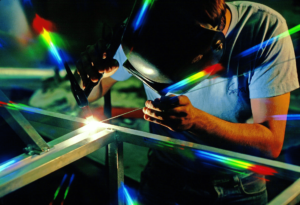
Hydrogen: where we are now?
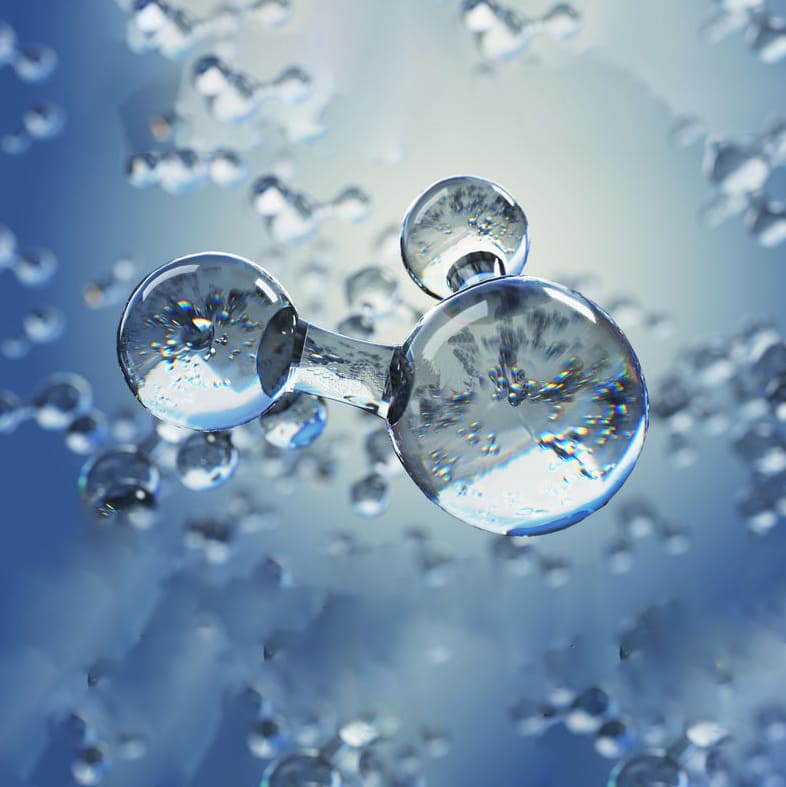

Faced with the climatic and ecological challenges as well as the implementation of regulations promoting the decarbonization of energy uses in transportation, hydrogen is a very versatile and attractive energy carrier.
Many people today consider it to be the future solution for the energy transition.
But for this to be the case, hydrogen must be produced from decarbonized energies, i.e. nuclear and renewable.
After an overview of the hydrogen industry, this report will allow us to understand how hydrogen works and its different production stages, but also what are the security aspects surrounding the storage and use of hydrogen.
Finally, we will focus on the hydrogen version of the Businova, the first H2 bus manufactured in France.
Numerous statements from research institutes and companies have recently put the hydrogen industry back on the agenda.
In France, the former Minister of Ecological and Solidarity Transition, Nicolas Hulot, presented a government plan on June 1, 2018 to promote the sector.
What about its future? By questioning the various players in the French and European hydrogen sector, we quickly understand that hydrogen technology has its place in alternative energy solutions, more specifically in the transportation sector.
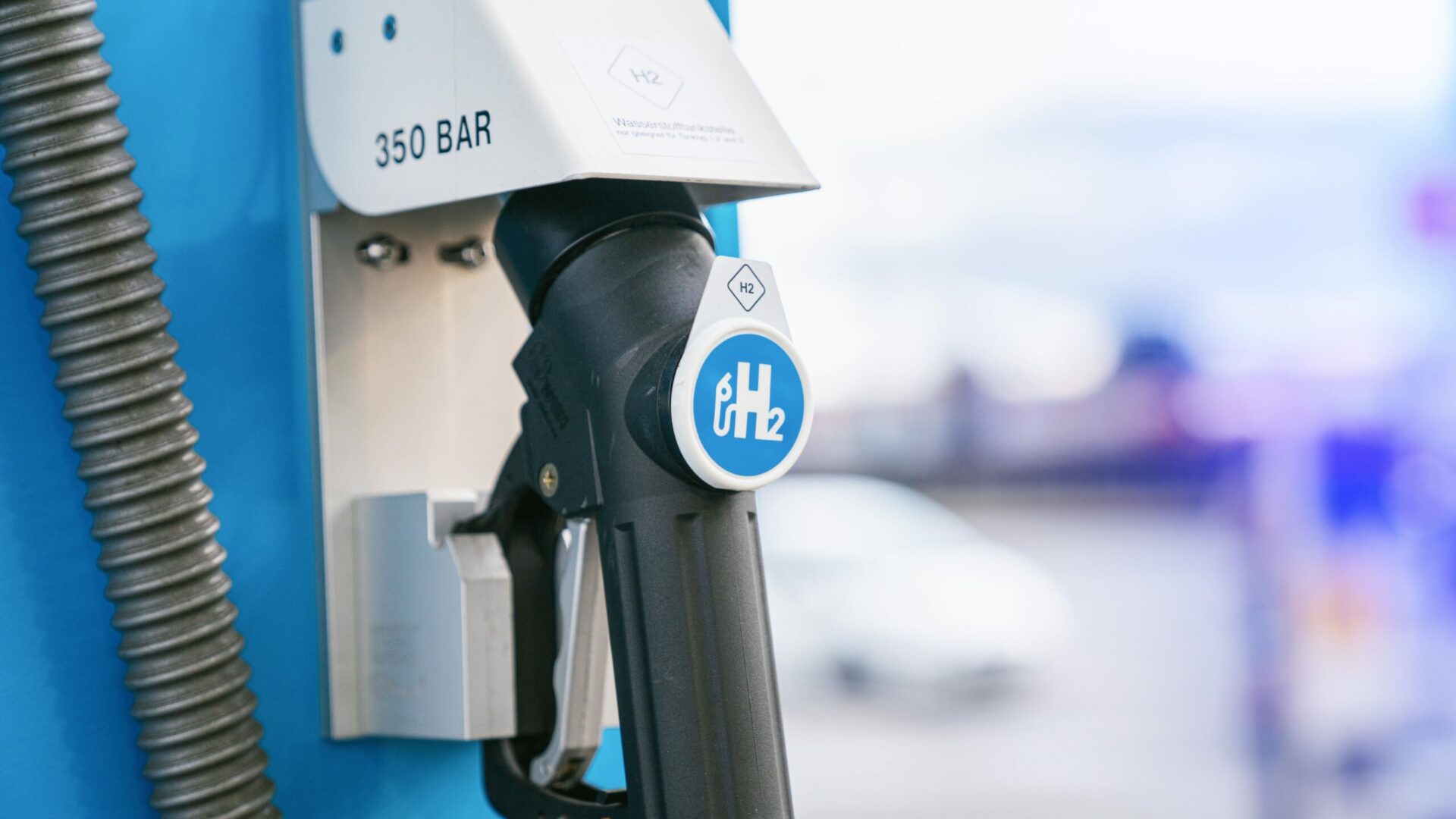
“The hydrogen industry is mature, it’s time to change scale”
It is now clearly accepted, and this is also the position of the leaders of AFHYPAC (French Association for Hydrogen and Fuel Cells), that green hydrogen provides an effective solution to the challenges of the energy transition. It could represent 18% of energy consumption by 2050.
The deployment of new hydrogen applications would generate an annual demand of 1.8 million tons of hydrogen in Europe in 2030, which is twice the annual consumption of France in 2015. On a global scale, hydrogen production related to non-traditional applications (excluding oil and chemicals) could be multiplied by 20 by 2030, going from 0.17 to 3.5 million tons.
From the point of view of the ADEME (Agence De l’Environnement et de la Maîtrise de l’Energie), the hydrogen sector would bring flexibility and optimization solutions to energy networks. It envisages a scenario by 2035 with 64% of electricity from renewable sources, enabling the production of 30 TWh of hydrogen per year at a cost of less than €5 per kg. A price considered competitive today.
The vision of the CEA (Commissariat à l’Energie Atomique) also agrees with that of AFHYPAC. The hydrogen sector is currently taking off and the prospects are very promising. This is for several reasons: a real drop in the cost of electrolysers and renewable energies such as solar energy, and therefore an interesting price per kg of hydrogen, associated with a need linked to electromobility, limited for pure battery vehicles, which cannot respond to the principle of rapid recharging as diesel allows.
Thus, in 2050, hydrogen could represent 20% of the energy demand (a production equivalent to 220 TWh) and the sector could represent a turnover of 40 billion euros and 150,000 jobs in France. But to achieve such a result, significant investments must be made. In France alone, 800 million euros should be invested per year over the next 10 years to deploy these technologies. The Hulot plan (see article opposite) adopted in France in 2018, could provide the first financial solutions to this challenge, but it is still far from meeting the entire demand.
Like many countries that have already structured and developed their hydrogen ecosystem (Japan, Germany, South Korea, the United States, etc.), the French industry is now mature and has many first-rate manufacturers on the international scene. If the former Minister Nicolas Hulot said that “the entire hydrogen industry exists in France”, it now remains to persevere in the implementation to advance the industry.
Following the ADEME press release dated May 3, 2019, here are the validated projects that concern the acquisition of hydrogen buses:
Other projects have been validated, which concern either utility vehicles (garbage trucks, cabs, delivery trucks, etc.) or hydrogen production and storage stations, which will be used to power future vehicles.
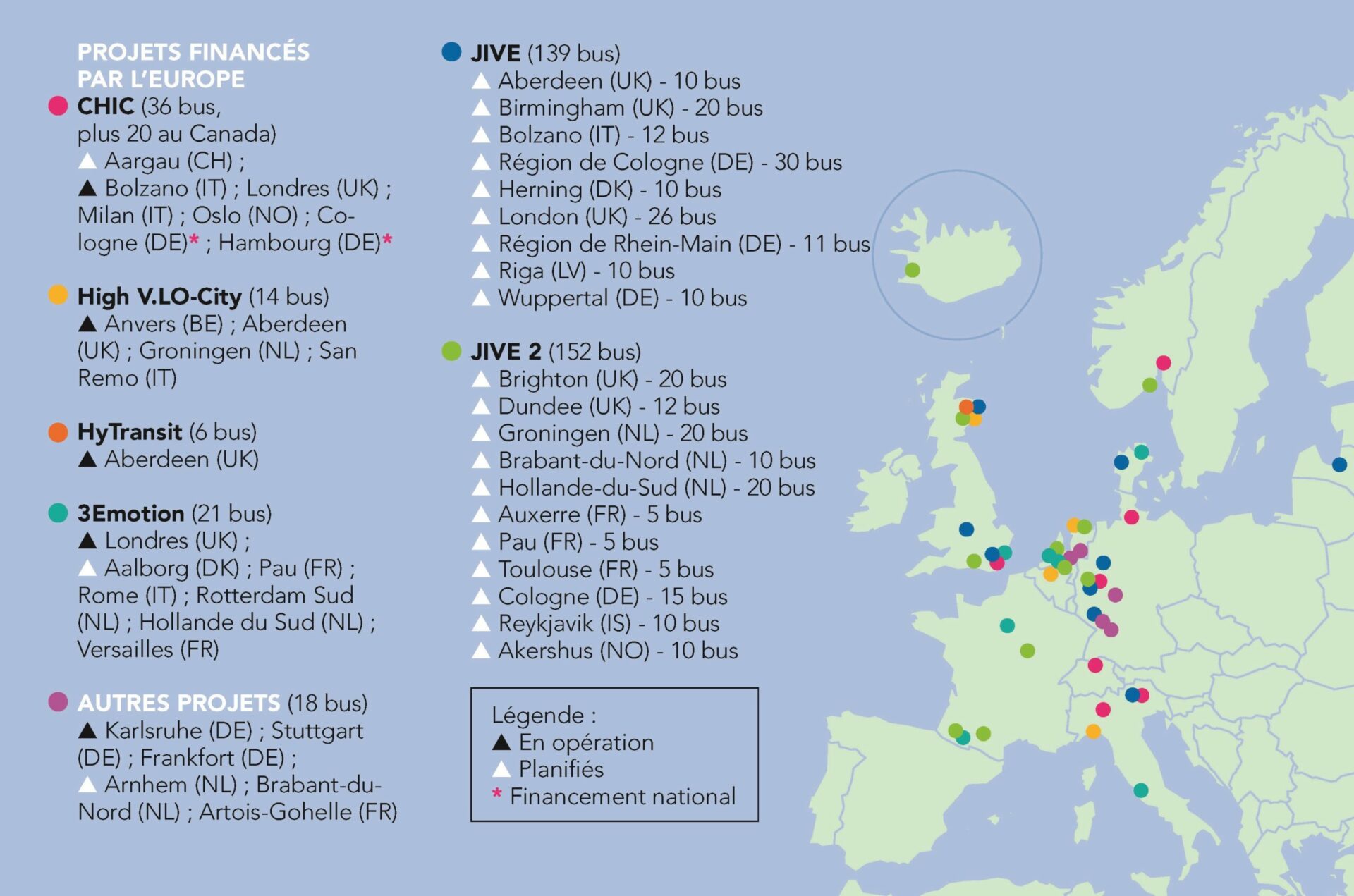
Most of the bus deployment projects in Europe are organized by the Fuel Cells and Hydrogen Joint Undertaking (FCH JU). The FCH JU is a public-private partnership, based in Brussels, whose goal is to accelerate the market for hydrogen and fuel cell technologies.
The FCH JU allows, beyond the orientation of the strategies and the market, the allocation of subsidies to the various project leaders. The various successive programs are, among others, CHIC, JIVE, 3Emotion, JIVE 2…
In June 2018, a few months before leaving his ministry, Nicolas Hulot launched a hydrogen plan that was intended to be ambitious: €100 million per year for five years to “make France a world leader in this technology.” In short, the hydrogen deployment plan should allow this sector to capitalize on its assets to “maintain our lead in the heart of an already fierce global competition”. If the first deployments are successful, the following objectives will guide the Government’s action in the coming years
Introduce 10% decarbonated hydrogen in industrial hydrogen by 2023 (i.e., approximately 100,000 t) and 20 to 40% by 2028 ;
Deploy territorial hydrogen mobility ecosystems, based in particular on professional vehicle fleets, with the introduction of :
5,000 light commercial vehicles and 200 heavy vehicles (buses, trucks, TERs, boats) as well as the construction of 100 stations, fueled by locally produced hydrogen by 2023;
20,000 to 50,000 light commercial vehicles, 800 to 2,000 heavy vehicles and 400 to 1,000 stations by 2028.
However, according to recent news from the hydrogen industry, while the program is not being questioned, the ambition is being revised downwards. Thus, in 2019, the credits allocated will be based on the most advanced projects and some parts of the plan could be left fallow. There is talk of an H2 plan revised to only 10 million euros …
This is a long way from what is needed, since according to AFHYPAC’s estimates, nearly 800 million euros per year should be invested in the hydrogen sector over the next 10 years to develop these new technologies.

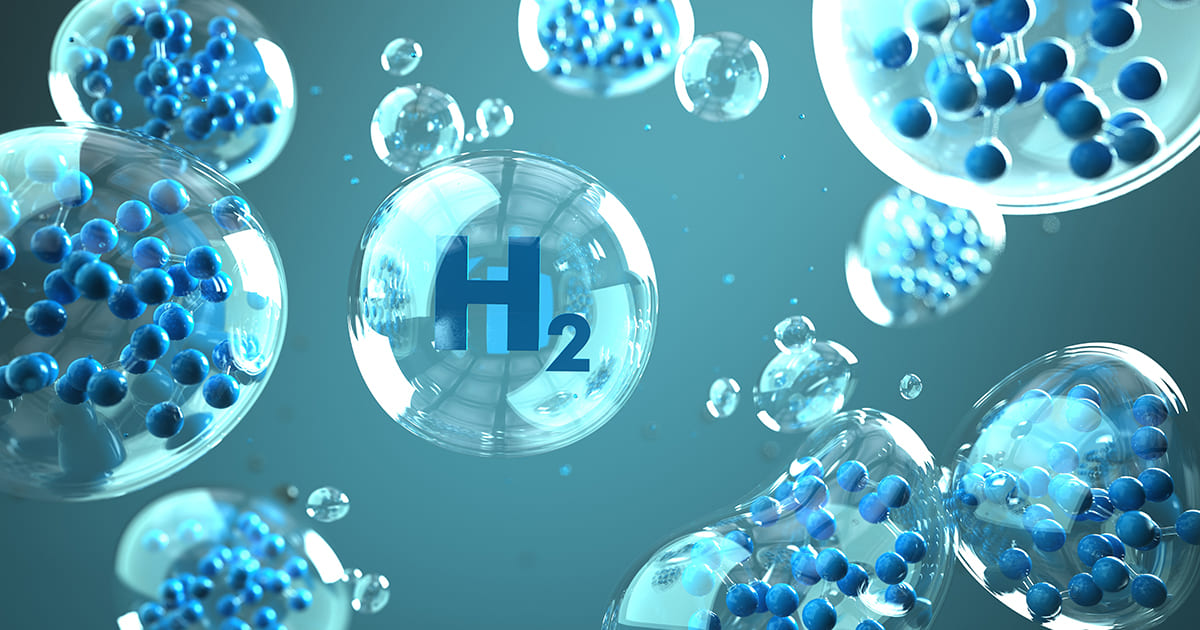
Hydrogen is the simplest and lightest chemical element of all gases in the universe, composed of one proton and one electron. It is invisible, odorless, non-toxic, found in all organic matter and in water, which covers 70% of the surface of our planet. Hydrogen is considered the perfect fuel, the cleanest and most efficient fuel because it does not pollute the ground or the water table and is not dangerous for the ozone layer.
Hydrogen is a natural fit!
We have been hearing about hydrogen as a clean and inexhaustible fuel for years. It took a long time to see the first vehicles running on this energy. And yet it is the solution that allows us to meet zero-emission requirements, without adding significant operational constraints for operators.
A look back at the genesis of hydrogen
It was in 1671 that Robert Boyle produced hydrogen somewhat by chance while experimenting with iron and acids, but it was not until 1766 that Henry Cavendish recognized it as a distinct element. This element was named hydrogen by the French chemist Antoine Lavoisier.
In our daily lives, when we talk about hydrogen, we are in fact referring to dihydrogen (H2). It is this molecule which is composed of two hydrogen atoms (H2) generally in gaseous form.
O2 + 2H2 = 2H2O
Hydrogen is the genesis of everything. It is the first element that was created after the Big Bang and it is also the first element of the periodic table, with the chemical symbol H. Hydrogen is the simplest and most abundant element in the universe: it represents 75% of the mass of the universe and 92% of the atoms. It is therefore the most common substance in the universe and the richest source of energy for stars like the sun. It consists of a proton (a positively charged nucleus) and an electron (negatively charged). It has the atomic number 1 and its standard atomic weight is 1.008. This is why World Hydrogen Day is celebrated every year on October 8. It is therefore the lightest atom. It has the quality of being much lighter than air and therefore of diffusing rapidly, which is a very favorable element for the safety of its use.
But what exactly is hydrogen?
Although hydrogen was created in the Big Bang, it does not exist naturally on Earth. It forms covalent compounds with most non-metallic elements. Most of the hydrogen on Earth exists in molecular forms such as water or organic compounds. When combined with oxygen, it turns into water (H2O). Combined with carbon, it forms methane (CH4), coal and oil. It is found in all growing things (biomass).
The mass calorific value of hydrogen is the highest of all the existing fuels: this explains the interest that the energetics find in it. 1 kg of hydrogen contains 3 times the energy of 1 kg of gasoline! However, its low density is a disadvantage for its transport as it requires either pressurization or liquefaction, both of which penalize the energy expenditure that accompanies its use.
This fuel has a high yield and is non-polluting. Once hydrogen is produced in the form of molecular hydrogen, the energy present in the molecule can be released by reacting with oxygen to produce water. This can be done either by traditional internal combustion engines or by electrochemical devices called fuel cells. It is the only non-carbon fuel, therefore not producing CO2 during its combustion.
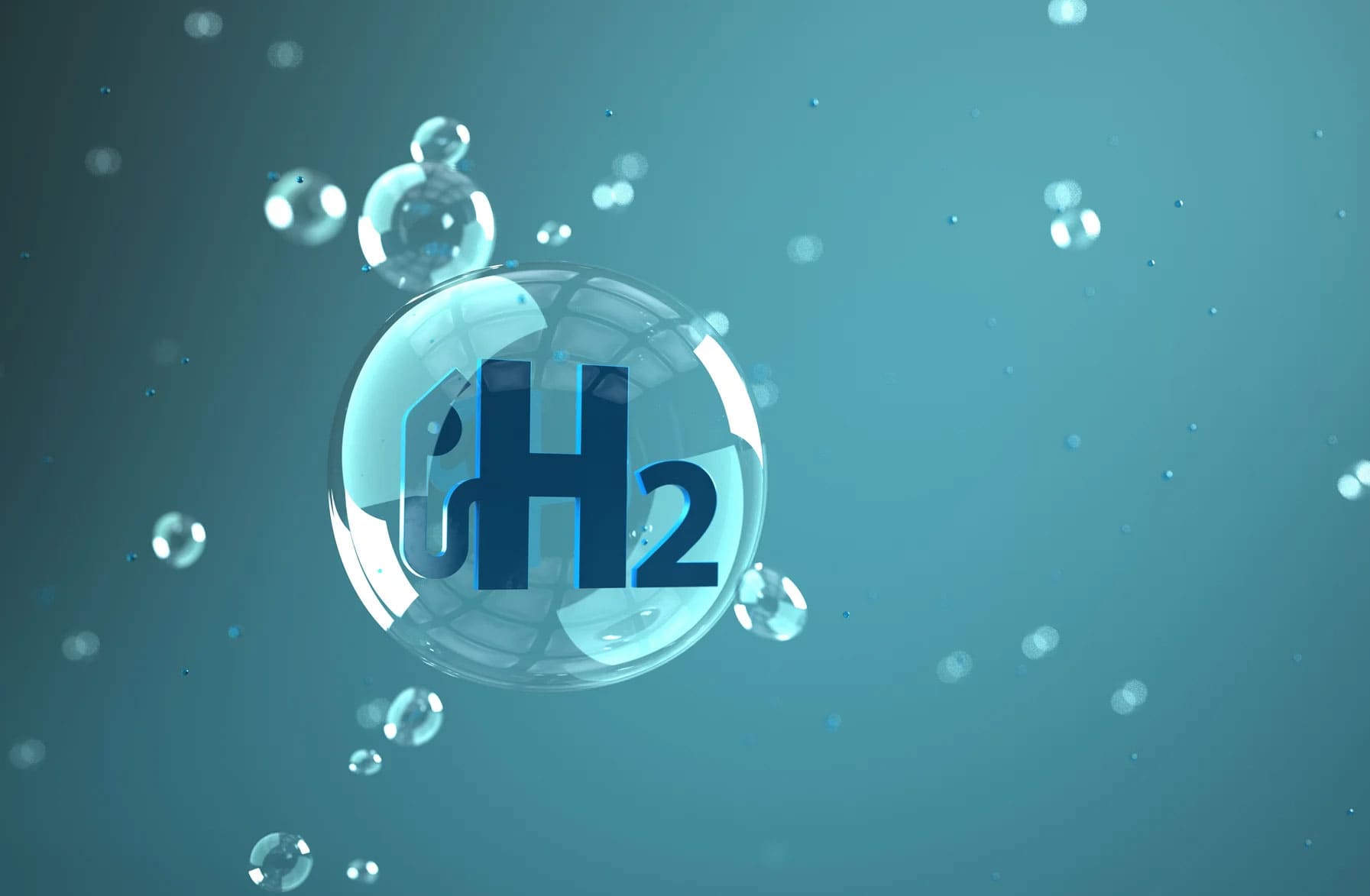
How to produce hydrogen?
Hydrogen is an energy carrier that is not very present in nature in its molecular state: it must therefore be produced before being used or stored. There are different sources and processes for its production, keeping in mind that it must be produced as cleanly as possible.
Hydrogen is produced by dissociating it from the atoms with which it is combined. These are oxygen atoms in the case of water, which is done by electrolysis. These are carbon atoms for fossil materials which are dissociated by reforming or oxidation, also involving water in the reactions. Apart from water, fossil fuels represent 96% of the raw materials used to produce hydrogen in the world (49% natural gas, 29% liquid hydrocarbons and 18% coal). In total, 60 million tons of hydrogen are produced each year in the world.
To date, only small amounts of hydrogen have been generated from renewable energy sources, but this amount is expected to increase in the future. The national action plan calls for 10% decarbonized hydrogen to be introduced into industrial hydrogen by 2023 (about 100,000 t) and 20-40% by 2028.
In fact, almost all of the hydrogen available today comes from natural gas reforming. Thermochemistry is at the laboratory stage and electrolysis represents less than 1% of the total hydrogen production capacity; the latter is only used if the electricity is either fatal (case of renewable energies such as wind or photovoltaic) or cheap and/or if a high purity of the hydrogen produced is required. Currently, the increasing use of renewable sources is leading to the development of electrolysis, a process well adapted to the valorisation of these new energies. In this case the carbon footprint is zero, which makes hydrogen “green”.
In summary, hydrogen…
is the most abundant element on the planet, but it rarely exists alone. Therefore, hydrogen (H2) is produced by reforming or electrolysis
can be produced in many ways. Some methods produce CO2 while others do not release carbon
can be renewable or decarbonized if it is produced from renewable or nuclear electricity or from biomass
has the highest energy content of any common fuel by mass
is a highly efficient, low-emission fuel that can be used for transportation, heating and power generation in places where it is difficult to use electricity directly
"Yes, my friends, I believe that water will one day be employed as a fuel, that the hydrogen and oxygen which constitute it, used singly or simultaneously, will furnish a source of heat and light inexhaustible and of an intensity which coal could not have."
Jules Verne, "L'île mystérieuse"
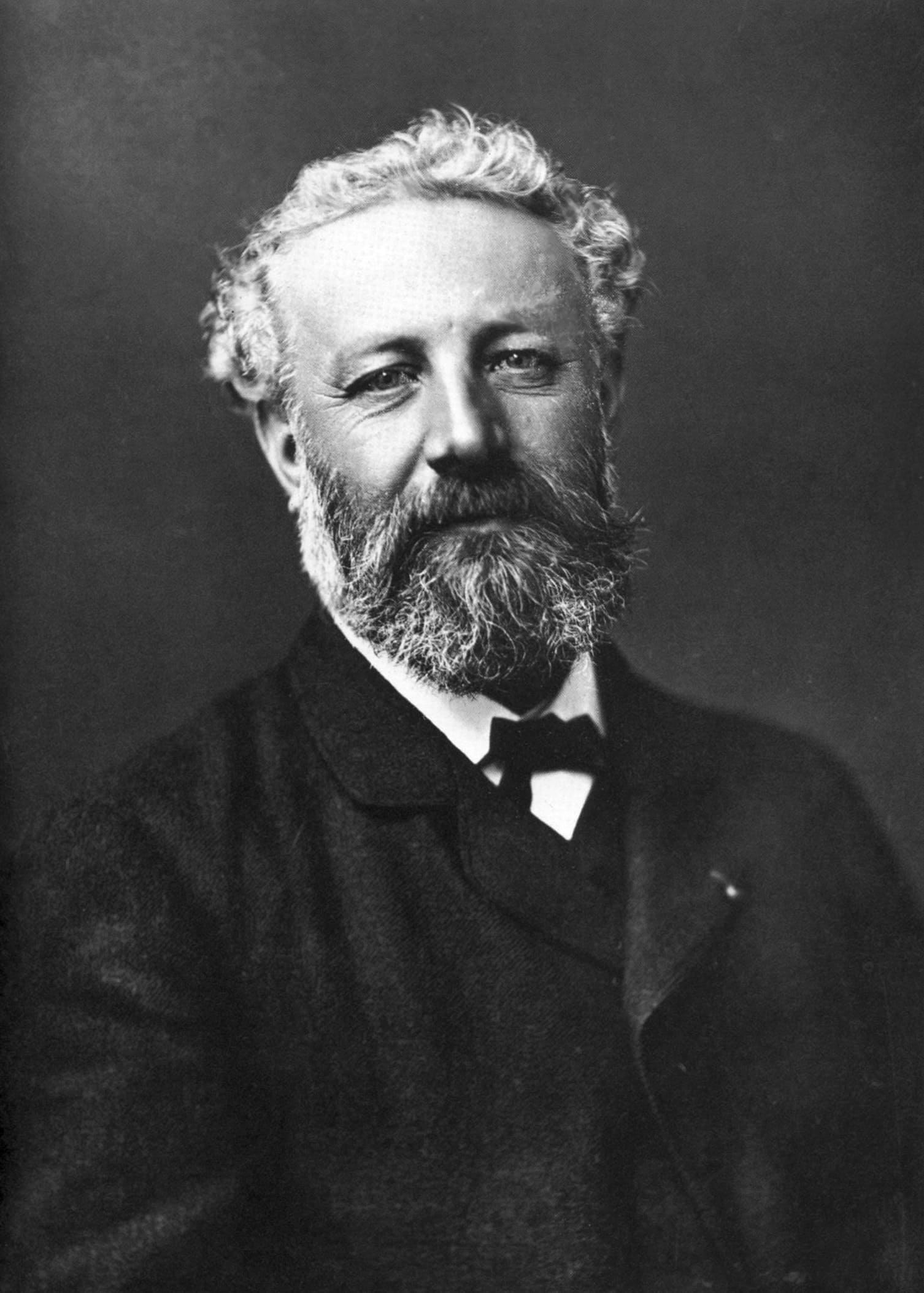
In a world facing ever more pressing environmental issues, transition
“A stone has no hope of being anything other than
The fourth leading cause of mortality in the world, air